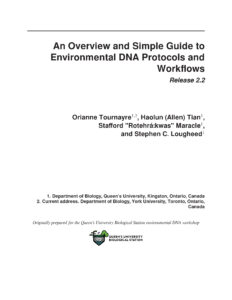Our ApproachesWe use genomics and transcriptomics, environmental DNA surveys, morphometrics and sonographic and colour analyses to quantify variation across the distributions of organisms. We combine these with experimental approaches (phonotaxis, hybridization experiments), GIS and niche modeling, and automated climate measurement to understand the causes and consequences of diversity across geographical and temporal scales, and to assess the impacts of human activities on wild populations. Over the last decades we have worked with Indigenous partners on some outstanding environmental and conservation issues seeking to develop solutions that value rich local Indigenous knowledge together with the latest genomics insights. |
 Check out our new Environmental DNA Manual. Check out our new Environmental DNA Manual.
Orianne Tournayre, Haolun (Allen) Tian, Stafford “Rotehrá:kwas” Maracle, David R. Lougheed & Stephen C. Lougheed. 2024. An overview and simple guide to environmental DNA protocols and workflows. Version 2.2.1. Queen’s University, Kingston, Ontario, Canada. DOI: 10.5281/zenodo.13421371 The manual emerged from our Environmental DNA workshop offered annually at the Queen’s University Biological Station. It presents an overview of eDNA approaches and provides guidance from study design, sampling, sample processing and storage, laboratory methods, data processing to interpretations for eDNA studies. |